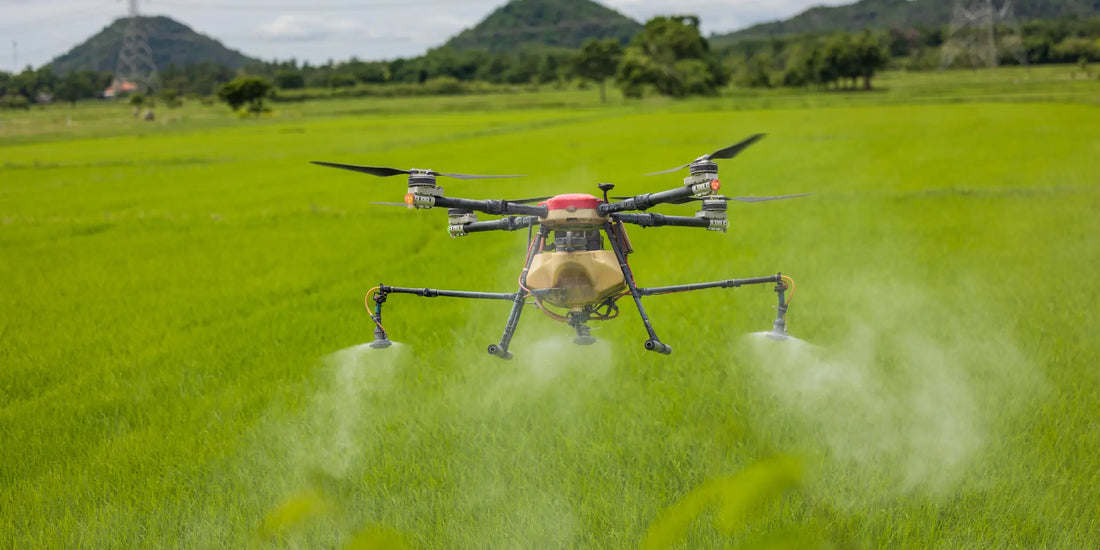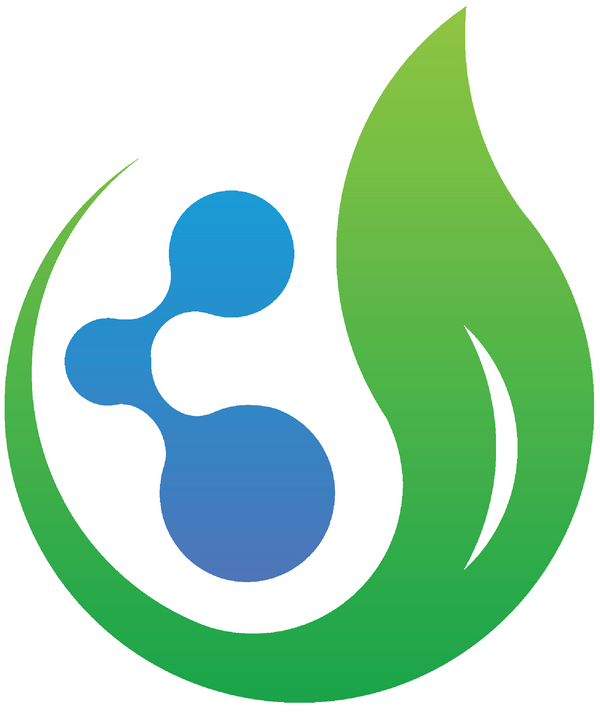
Revolutionizing Agricultural Sustainability and Global Food Security through Digital Agriculture
by Ashley Kim
With breakthroughs in artificial intelligence and machine learning, we're standing on the brink of another major technological shift that has the potential to transform society as we know it. But as we enter this era of unparalleled automation and efficiency, we can't afford to ignore the critical global challenges we face - climate change, food security, and environmental health.
As the world population continues to grow at an unprecedented rate, so does the demand for food. It's a challenge that's only set to intensify in the coming years, with estimates suggesting that by 2050, we'll be faced with the daunting task of feeding almost 10 billion people. Global food security is a complex challenge due to the inextricable links between climate change, the environment, and commercial agriculture. The agricultural industry is under immense pressure to meet the growing demand for food, while also mitigating the impact of anthropogenic changes to the environment. Climate change is a major factor, with estimates suggesting that global food demand and the risk of hunger could increase by as much as 62% and 30%, respectively, due to its effects.
As a result, the intensification of commercial agricultural practices has become necessary, but it's a double-edged sword that comes with its own set of challenges. For example, unprecedented agro-chemical use contributes to greenhouse gas emissions and environmental pollution, exacerbating the impacts of climate change even further. It's a delicate balancing act that the agricultural industry is currently grappling with as it strives to meet the demands of a growing population while also minimizing the impact on the environment.
As we face the increasingly urgent impacts of climate change, food insecurity, and environmental health on future global health, we are fortunate to be witnessing a technological revolution with the potential to address these challenges. With the emergence of digital agriculture as a distinct and rapidly evolving field, we have a powerful new tool in our arsenal. Machine learning and artificial intelligence are at the forefront of this revolution, providing new opportunities for optimizing crop production, managing supply chains, and monitoring environmental impacts. Harnessing the power of these technologies may offer a path towards a brighter, more sustainable future for our planet.
Technological Advancements that Paved the Way for Digital Agriculture
The world of agriculture has undergone a digital revolution in recent years, with the emergence of digital agriculture - a multidisciplinary field that leverages innovative technologies to optimize agricultural processes. From crop production to supply chain management, digital agriculture utilizes tools such as sensors, big data analytics, artificial intelligence, and imaging tools to improve the efficiency, productivity, and sustainability of agriculture.
While the roots of digital agriculture can be traced back to the mid-20th century when use of remote sensing to collect data on soil moisture levels and weather data to forecast crop yields were first explored, it wasn't until the 1980s with the introduction of Geographic Information Systems (GIS) that farmers were able to analyze data about soil types, weather patterns, and other variables to make more informed decisions about crop production. GIS was a major breakthrough that paved the way for the emergence of digital agriculture as we know it today.
Fast forward to the 21st century, and the development of sensor technologies, imaging tools, and big data analytics has enabled even greater advancements in digital agriculture. With the help of machine learning and artificial intelligence, farmers can now analyze data from a wide range of sources to make more accurate predictions about crop yields, pest and disease outbreaks, and other variables.

Sensors and mobile apps connected via Internet provide real time data.
The field of digital agriculture has seen a significant growth in recent years due to the rapid advances in technology. This has led to the emergence of new and innovative applications in farming, making agriculture more sustainable, efficient, and resilient. Digital agriculture is an exciting area of research and innovation with immense potential to transform the way we produce and consume food. As we continue to explore and develop new technologies, the future of agriculture looks promising, offering exciting possibilities for a more sustainable and equitable food system.
Optimizing Crop Production and Sustainability through Digital Agriculture and Precision Farming
From drones that collect high-resolution data on soil and crop health to artificial intelligence that can predict future crop yields and identify the best crops to plant, digital agriculture is rapidly evolving, offering promising applications of machine learning to optimize crop production, reduce waste, and improve resource efficiency.
Precision agriculture is at the forefront of these advancements, using big data analytics to optimize water usage, reduce waste, and apply inputs at variable rates across growing systems, based on local conditions and crop needs. Through tailored inputs, farmers can reduce their environmental impact, promote sustainability, and increase the resilience of agriculture to the impacts of climate change and other threats.

Mobile apps store and process large amounts of data, and presenting it as actionable items.
Digital agriculture also has the potential to support global food security and agricultural sustainability by providing farmers with tools to monitor their environmental impact, manage risks, and increase productivity. By using machine learning to monitor food safety, quality, accessibility, and affordability, digital agriculture can optimize methods to monitor and evaluate global food supply chains, reduce the global hunger gap, and minimize food deserts.
Unlocking the Potential of Digital Agriculture: Harnessing Microbial Inoculants for Sustainable Crop Production
Digital agriculture is transforming the field of agriculture in numerous ways, including the use of microbial inoculants to optimize crop production. Microbial inoculants are microorganisms that are introduced to the soil or plant to promote healthy plant-microbiome symbiosis and improve soil fertility, leading to better yields and higher-quality crops.
The use of genomics and machine learning algorithms to analyze the microbial communities present in soil can predict the most effective microbial inoculants for specific soil types to promote healthy plant growth and yield. By incorporating soil microbiome metagenomics into precision agriculture, farmers can optimize crop management practices, reduce the use of harmful fertilizers and pesticides, and promote sustainable agriculture.

In addition, digital agriculture can provide farmers with real-time data on the health and productivity of their crops, enabling them to make informed decisions about when and how to apply microbial inoculants. Through tailored inputs, farmers can reduce their environmental impact, promote sustainability, and increase the resilience of agriculture to the impacts of climate change and other threats.
Digital agriculture using microbial inoculants has the potential to support global food security and agricultural sustainability by providing farmers with tools to monitor their environmental impact, manage risks, and increase productivity. By leveraging new and innovative technologies, we can optimize the use of microbial inoculants to produce higher-quality crops, while also promoting healthy ecosystems and reducing the use of harmful chemicals.
As we look towards the future of agriculture, there is no doubt that digital agriculture using microbial inoculants holds immense promise. With its ability to revolutionize crop production and promote healthy ecosystems, this innovative approach to farming has the potential to transform our food systems for the better. By harnessing the power of precision farming, microbiome analysis, metagenomics, and other cutting-edge technologies, we can work towards a more sustainable, equitable, and prosperous future. The possibilities are endless, and with continued innovation and collaboration, we can create a world where healthy, nutritious food is accessible to all.

Timeline (supplement notes to figure)
- 1957: The first weather satellite, Vanguard 2, is launched. This marked the beginning of space-based remote sensing technologies for weather forecasting and monitoring.
- 1958: NASA is established, which would later become a key player in the development of remote sensing technologies for agriculture.
- 1960s: The development of microwave remote sensing technologies, which can penetrate clouds and vegetation to detect soil moisture levels, marks the beginning of the use of remote sensing for agriculture. Additionally, the Green Revolution begins, characterized by the use of high-yielding crop varieties, synthetic fertilizers, and pesticides. This period marks the beginning of modern industrial agriculture.
- 1972: The first Earth observation satellite, Landsat 1, is launched. This marks the beginning of the use of satellite imagery for agricultural applications, such as crop mapping and yield estimation.
- 1980s: The first GPS satellites are launched, paving the way for precision agriculture. Farmers could now use GPS to accurately map their fields, apply inputs only where they are needed, and monitor crop growth in real-time.
- 1990s: The Internet becomes widely available, and agribusinesses start to use it to collect and share data. This period also sees the introduction of the first farm management software programs.
- 2000s: The rise of the smartphone and other mobile devices improves access to information and communication among farmers and those in the agriculture industry. This period also sees the development of advanced analytic tools for analyzing agricultural data.
- 2010s: The Internet of Things (IoT) becomes more prevalent in agriculture, with sensors and other connected devices being used to collect data on soil moisture, temperature, and other environmental factors. Drones and other unmanned aerial vehicles (UAVs) als become more widely used for crop monitoring and spraying.
- 2020s: The development of blockchain technology makes it possible to track agricultural products from farm to table, ensuring transparency and traceability in the supply chain. The continued development of precision agriculture technologies, such as autonomous tractors and robots, show promise in revolutionizing the way crops are planted, harvested, and managed.

